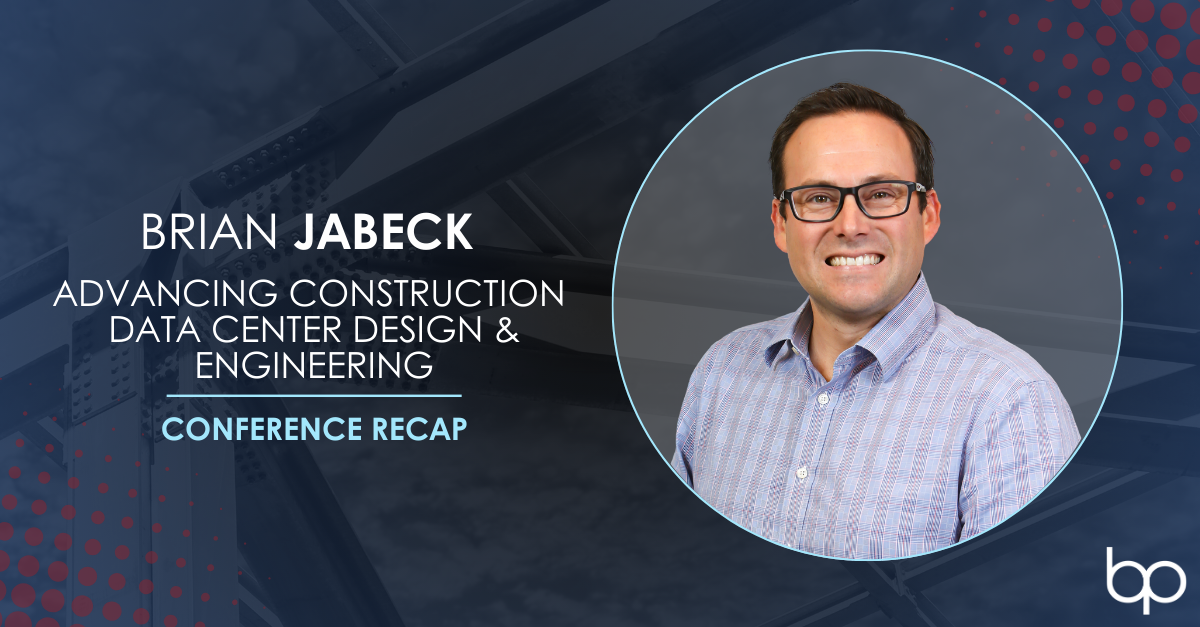Brian Jabeck, Vice President of Business Development at Bennett & Pless, recently spoke on a panel at the Advancing Construction Data Center Design & Engineering conference in San Francisco, CA. The conversation focused on the evolving energy landscape for data centers and the increasing need for alternative power sources to support high-capacity, future-ready facilities.
The panel brought together leaders from Oklo, Microsoft, and Casne Engineering to explore how the industry is navigating energy constraints and rethinking its strategies. Brian explained that design progress is often stalled if a data center can’t secure reliable power. With the growing demand for speed and scale, power availability has become a driving factor in design decisions. To meet these challenges, the industry is considering short-term solutions like natural gas while exploring long-term options such as nuclear power.
When asked about the promise of nuclear power, Brian pointed to its unmatched energy density, reliability, and long-term cost efficiency. He noted that it offers significant upside as a clean energy source capable of supporting large-scale operations. “There’s a lot of really good upside from the nuclear side of things,” he said. “But there’s going to be a lot of PR and community challenges to educate and understand what it means to have a nuclear facility nearby.” He also noted that the regulatory environment and the fuel supply chain for nuclear power are still in early stages, requiring major investment and coordination.
Structural engineers play a critical role in ensuring new energy strategies can be successfully integrated into data center design. As server rack densities rise and kilowatts per rack increase, facilities must be designed to support heavier loads and more robust infrastructure. Structural engineers not only influence the physical building requirements, but they also help ensure that the structure supports advanced cooling technology and growing power and cabling requirements as data center rack density increases. “The structural piece is a big part of this discussion and something that needs to be managed well early in the process with clients,” he said. “We’re designing for what’s next, not just for what’s now.”
Throughout the panel, there was a clear sense of alignment among participants. Most agreed that the industry must adopt a phased approach: using natural gas as a bridge while building toward a future powered by nuclear. This pathway also creates room for greater integration of renewable sources like wind and solar by providing the necessary baseline capacity for grid stability.
This outlook ties directly into how Bennett & Pless approaches data center design today. With a commitment to SE 2050, the firm places long-term resilience and sustainability at the core of its work. The team focuses on asking the right questions early in the process to avoid short-term decisions that might lead to costly retrofits later. Material selection, speed of deployment, and carbon impact are all weighed carefully to ensure each facility is built for performance and longevity.
Another important consideration is the opportunity to repurpose existing buildings. Legacy data center locations or industrial buildings with strong power infrastructure may offer hidden value. If the structure and site conditions are right, these spaces can be retrofitted instead of demolished, creating cost-effective, sustainable solutions. For clients, this kind of adaptive reuse can offer major benefits in terms of time, carbon reduction, and investment efficiency.
Brian’s insights reflect the broader shift happening in the industry. As power demands increase and sustainability goals sharpen, the way we plan, design, and build data centers must evolve. Through proactive design thinking, a deep understanding of structural needs, and a focus on long-term value, Bennett & Pless is helping lead the way forward.
